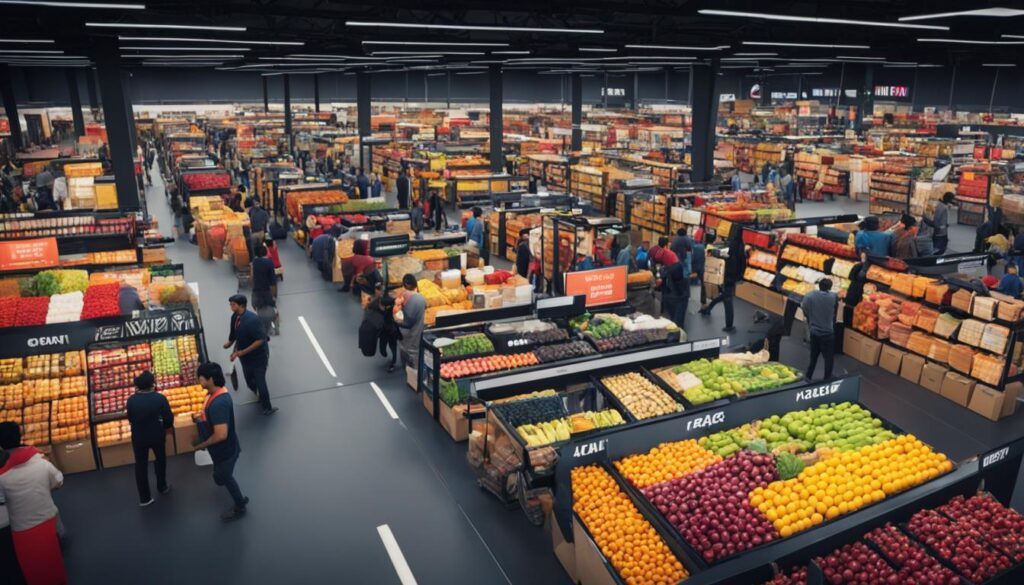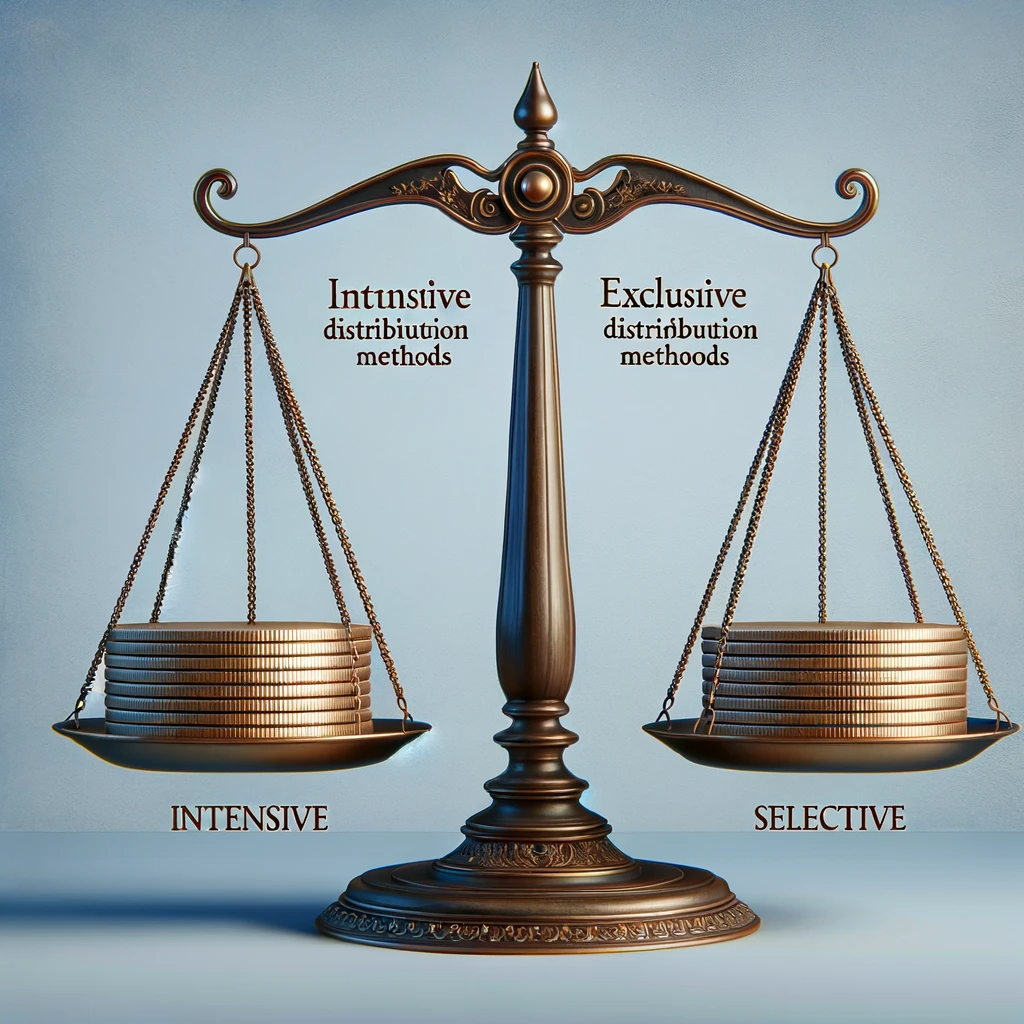In the realm of contemporary commerce, we recognize the shifting echelons of market command—from boardroom decrees to dynamic consumer dialogues online. As the consumer voice grows dominant in the theater of brand perception, we pivot towards an intensive marketing strategy that places insight at the vanguard of executive decision-making. Despite the deluge of data coursing through the digital veins of companies, a staggering 60-73% remains untapped for analytics. This is where our strategy flourishes.
Leveraging cutting-edge AI and technologies like natural language processing, we decode the cacophony of market data, garnering actionable insights that sculpt informed business choices. Through partnerships with solutions like the Meltwater Enterprise Intelligence Suite, consumer voices are amplified, heralding the era of insight-driven marketing. Notably, entities deploying data-driven marketing on a grand scale have observed an uptick in net sales value by up to 5% and a 20% surge in marketing efficiency, according to McKinsey & Company.
Brands like Shiseido and Haleon exemplify how large-scale, insight-driven marketing can metamorphose business outcomes, engender a comprehensive grasp of customer needs, and enhance a company’s competitive advantage. An intensive distribution strategy, as a marketing tactic, not only broadens brand awareness but also catalyzes market share and intensifies marketing efforts. It’s the cornerstone for companies intent on upscaling their market position and increasing sales through strategic distribution and competitive maneuvering.
What is Intensive Distribution?

As marketing professionals, we recognize that the comprehensive reach of a product to consumers hinges upon the effectiveness of its distribution strategy. Intensive distribution stands as a cornerstone approach for those seeking to ensure their products are ubiquitously available, thereby heightening brand visibility and consumer access.
Intense Marketing Definition
The definition of intensive distribution encapsulates a marketing strategy employed to distribute products across as many outlets as possible. It is the intensive effort to saturate the market with a product, ensuring that it can be found in numerous retail outlets, and is thus distinguished by the philosophy of ‘the more, the merrier.’ Whether it’s a convenience store corner or large retail complex, the objective is to cover the full spectrum of potential purchase points.
Overview of Distribution Strategies
Understanding the types of distribution is crucial in choosing the right path for product dissemination. Intense marketing relies on not one, but an array of strategies, each tailored to market dynamics and consumer behavior. While we utilize intensive distribution to maximize reach, sometimes adopting selective or exclusive distribution can be equally insightful, targeting specific demographics or prestige markets respectively. The exclusive distribution limits a product to select retailers, enhancing brand allure, while selective distribution picks a suite of outlets that aligns best with the brand identity.
Our distribution channels are the pathways we carve in the marketplace, and within them, products flow from us, the manufacturer, to the hands of our valued consumers. From the intensive placement in many outlets as possible to the carefully curated approaches of selective and exclusive distribution, we chart the course that aligns with our strategic aspirations and consumer expectations.
Advantages of Intensive Distribution

In the realm of marketing, embracing effective intense marketing strategies not only helps in gaining a competitive edge, but also plays a pivotal role in magnifying our brand presence and solidifying our status within the consumer market. By examining the benefits of intense marketing, we can understand how it underpins the success of our business’s outreach efforts.
1. Increases Brand Awareness
One of the paramount advantages of intensive distribution is its unparalleled capability to increase brand awareness. Ensuring that your marketing content is impeccable plays a crucial role in this. Tools like Grammarly are indispensable for refining your content to perfection. Grammarly not only helps in eliminating grammatical errors but also enhances the overall clarity and impact of your messaging, ensuring that your brand communicates effectively across all channels.
When we maximize our products’ availability across various distributors, we consequently extend our reach and imprint our brand into the minds of many. As we continue to deliver our products or services through extensive channels, we ensure that our presence in the marketplace is both dominant and enduring, offering a significant advantage.
This involves getting the word out about the company and its products, and making sure that potential customers are aware of what the company has to offer. This can be done through advertising, news releases, and events. It is also important to build relationships with media outlets so that they are more likely to coverage of the company.
2. Boosts Brand Loyalty
Our methodology in distribution goes beyond just making our product available; it also contributes to nurturing brand loyalty. This frequent encounter with our brand during routine purchases encourages a steadfast connection, prompting customers to choose our brand over others. This loyalty forms the core of our customer base, propelling us to foster robust relationships with both our existing and potential customers.
3. Enhances Sales
Effective intensive marketing strategies are critical for sales enhancement. By positioning our products in a way that they are part of the consumer’s impulse purchase path, we not only respond to the convenience factor but also capitalize on the immediate willingness to purchase. These strategies ensure that our partner distributors consistently showcases our products, thereby boosting opportunities for sale conversions.
4. Establishes Products as Alternative Options
Finally, by making our products omnipresent, we effectively establish them as viable alternative options in the eyes of consumers. Whether it’s through a strategic partner distributor or through direct channels, providing consumers with easy access to our products paves the way for them to consider and ultimately choose our offerings over competitors. Such alignment with consumer convenience can significantly grow our customer base.
| Benefit | Strategy to Maximize | Expected Outcome |
|---|---|---|
| Increase Brand Awareness | Collaborate with a wide range of retailers | Brand becomes a household name, increased market share |
| Boost Brand Loyalty | Ensure consistent product quality and availability | Repeat purchases, strong brand-user connection |
| Enhance Sales | Place products in high-traffic consumer areas | Higher sales volumes from impulse and convenience buys |
| Position as Alternative Option | Produce diverse product variations to fill market gaps | Secure product’s role as a go-to option, wider consumer reach |
Disadvantages of Intensive Distribution

While intensive distribution strategies can increase a product’s reach, we must consider some significant drawbacks that may impact our bottom-line and operational efficiency. In distributing products through extensive retail networks, the supply chain becomes more susceptible to challenges that can hinder our competitive market positioning.
1. Requires Large Inventory Management
In a competitive market where manufacturers and retail stores strive for product saturation, managing extensive inventory becomes crucial. The need to maintain high stock levels to feed an expansive distribution channel can inflate our operational costs and compound the risk management complexity inherent in our supply chain.
2. Utilizes Complex Distribution Channels
The complexity of distribution channel strategies is often understated. As we add more layers to our distribution strategies, we increase the number of variables in our network—from transportation logistics to retail compliance. This complexity necessitates a robust and responsive supply chain to ensure that inventory is where it needs to be, precisely when it needs to be there, raising potential issues in both timing and costs.
3. No Guaranteed Sales
Even with a low pricing strategy aimed at moving high sales volume, there is no guarantee that distributing products intensively will result in proportionate sales increases. The reality is we’re not alone in the market, and product saturation can erode the uniqueness of our offering, driving us to compete primarily on pricing rather than value-added differentiators.
4. Often Involves Low-Priced Goods
While intensive distribution often focuses on low-priced goods with slim margins, platforms like Sellfy offer an alternative by enabling creators and small businesses to directly reach their consumers. Sellfy simplifies the process of setting up an online store for unique or higher-value items, thereby allowing businesses to maintain reasonable profit margins while still benefiting from the extensive reach of digital distribution.
Therefore, to achieve sustainability and growth, we rely on tremendous sales volume, which may not always be feasible. The low pricing strategy may attract a segment of price-sensitive customers, but it can also cap our potential for higher revenue on individual sales.
| Aspect of Distribution | Disadvantages | Impact on Business |
|---|---|---|
| Inventory Management | Greater storage and tracking needs | Inflated operational costs and increased complexity |
| Distribution Channel Complexity | Logistical and compliance challenges | Higher risk and potential for disruption |
| Sales Volume vs. Guarantee | No sales guarantee despite extensive reach | Potential for unsold inventory and wasted resources |
| Pricing and Profit Margins | Competitive market driving down price points | Reduced margins requiring higher volumes for profit |
Intensive Distribution Strategy Explained

Understanding the intricacies of an intensive distribution strategy offers valuable insights into how companies can effectively place their products in front of consumers. By analyzing how to implement intense marketing and partnering with a wide network of distributors, businesses can enhance their reach and make their products readily available to a broad customer base.
Key Takeaways from Intensive Distribution Strategies
At the core, an intensive distribution strategy revolves around saturation of the market, ensuring that products or services are obtainable in as many locations as possible. Such a strategy is particularly beneficial for products that require high visibility to stimulate frequent purchases. Key benefits include:
- Rapidly growing market coverage to expose a brand to more consumers.
- Deepened market penetration that fortifies a brand’s presence.
- Capitalizing on extensive retail partnerships to optimize product accessibility.
Detailed Explanation of Intensive Distribution Approaches
Implementing an effective intensive distribution strategy involves understanding and capturing consumer attention at key digital touchpoints and a sound partnership framework. OptinMonster enhances this approach by enabling the creation of targeted lead capture forms and pop-ups. This tool is instrumental in converting website visitors into leads, ensuring that the intensive distribution strategy is not just about reaching customers but also about effectively engaging and converting them.
To analyze and execute this, we can look at several methods and tactics:
- Partner with a diverse network of retailers, from large chains to independent stores.
- Analyze consumer traffic and shopping patterns to identify prime locations for product placement.
- Ensure logistical efficiency to maintain product availability across all partnered locations.
We must employ intensive distribution methods to distribute products in multiple types of retail environments, thus maximizing the likelihood of conversion at the point of sale. By focusing on a strategy that captures many locations, from urban centers to rural outposts, a company can efficiently distribute the product to meet consumer demands whenever and wherever they arise.

The table below provides a snapshot of how an intensive distribution strategy could be structured:
| Element of Distribution Strategy | Description | Impact |
|---|---|---|
| Number of Retail Outlets | Expansive partnership with numerous retail formats | Increases brand visibility and customer touchpoints |
| Logistics and Supply Chain | Streamlined operations to manage widespread product delivery | Ensures continuous product availability and meets market demand |
| Consumer Behavior Analysis | In-depth market research to understand shopping patterns | Optimizes product placement and captures sales opportunities |
| Strategic Retail Partnerships | Collaborations with key retail partners in various channels | Leverages diverse market segments for broader distribution |
As we continue to refine our distribution strategy, we always prioritize the seamless integration of our products into everyday consumer journeys. By ensuring that our products are omnipresent, we establish a competitive advantage that not only meets customer expectations but also surpasses them, fostering long-term brand loyalty.
Comparative Analysis

Within the landscape of market dynamics, understanding the strategic differences between types of distribution is crucial for brands seeking to establish a competitive advantage. We recognize that each distribution channel offers a unique path for positioning products and responding to consumer preferences. As we explore the various approaches, we shed light on how partnerships and targeting strategies can influence brand positioning and create distinctive connections with different types of customers.
Intensive Distribution vs. Selective Distribution
Intensive distribution seeks to saturate the market by making products available in as many outlets as possible. This approach is designed to cast a wide net, ensuring that consumer access is maximized, thereby leveraging market segmentation in favor of volume and convenience. In contrast, selective distribution is more curated, focusing on fewer, often more specialized retail outlets. This method allows brands to align with the precise consumer preferences and behaviors of specific market segments, tailoring their presence for maximum impact and exclusivity.
Intensive Distribution vs. Exclusive Distribution
When compared to exclusive distribution, intensive distribution stands on the opposite end of the spectrum. Exclusive distribution cultivates an aura of exclusivity by partnering with a single retailer or a limited number of outlets, often in luxury markets.
Exclusive distribution cultivates brand exclusivity by selectively partnering with limited outlets, contrasting with the widespread approach of intensive distribution. In both strategies, a strong, memorable online presence is vital. NameCheap facilitates this by offering easy domain registration services, ensuring your brand stands out whether you’re pursuing an intensive or exclusive distribution strategy. A compelling domain name secured through NameCheap can be a pivotal element in building a strong digital identity.
The decision to employ exclusive distribution resonates with strategic differences tied to brand positioning, capitalizing on the allure of rarity and prestige. Here, the targeting strategies are meticulously crafted, ensuring that every touchpoint aligns with the expectations of a high-caliber clientele.
Examples and Models of Intensive Distribution

Intensive distribution stands as a pivotal component in the realm of product distribution and market strategies. It underscores the value of an effective distribution model by providing consumers with unfettered access to products through a vast distribution platform. This accessibility is not incidental—it is the product of deliberate, strategic partnerships between manufacturers and distributors, all interwoven within global brand strategies.
Our collective experience with universally recognized products like soft drinks and snack foods is testament to the sweeping reach of intense marketing examples. These products benefit from a distribution network that does not limit itself to traditional retail outlets but extends to every conceivable point of purchase, from corner stores to supermarkets and beyond.
Real-World Examples of Products Distributed Intensively
Take Coca-Cola, a paragon of an intensive distribution example, which has mastered the art of product ubiquity. By ensuring that their beverages are readily available in diverse settings, they foster a global brand presence that translates into immediate consumer access. And access drives consumption, which in turn fuels further market penetration.
Case Study of an Intensive Distribution Model
A closer examination of snack manufacturers unveils an effective distribution model based on manufacturer-distributor partnerships. The strategy is expansive, pitching tents in multiple retail venues—the ubiquitous grocery stores, convenience shops, and even vending machines. These strategic placements mean consumers are mere steps away from the products at any given time, promoting relentless sales momentum and deepening brand footprint.
We observe that these are more than mere market strategies; they represent a comprehensive approach to maintaining relevance in a fast-paced economy. It is about the fine art of balancing a multitude of outlets, ensuring consumer satisfaction, and driving brand loyalty.
Market Dynamics and Competition

As we navigate the complex landscape of today’s markets, understanding the intricate market dynamics and intense competition becomes pivotal for securing a competitive advantage. With businesses vying for consumer attention, strategic marketing practices are essential in achieving market prominence and sustaining growth.
Strategies for Managing Markets with Intense Competition
To thrive amidst intense competition, it’s crucial to employ intense marketing techniques that resonate with the target audience. We focus on product differentiation and innovative promotional methods to stand out and gain an upper hand in the competitive landscape.
Impact of Competition on Distribution Strategies
Competition significantly influences how we approach our distribution strategies. By conducting competitive market analysis, we adjust our tactics to ensure that our products reach our customers efficiently, despite a saturated marketplace.
Market Research and Brand’s Public Reputation
Meticulous market research is at the foundation of our reputation management. Collecting consumer insights and feedback empowers us to not only improve our offerings but to enhance our brand awareness and public image effectively.
Insights on Standing Out in a Crowded Market
To differentiate our brand in a crowded marketplace, exceptional visual and digital assets are key. Envato Market serves as a treasure trove for obtaining high-quality ads templates, and graphics. These resources empower brands to create unique and visually engaging marketing materials, helping them stand out in the intense competition and attract consumer attention more effectively.
| Focus Area | Strategy | Goal |
|---|---|---|
| Product Differentiation | Customize offerings to meet specific consumer needs | Create unique selling points |
| Brand Reputation Management | Engage in proactive communication and issue resolution | Build trust and maintain a positive brand image |
| Consumer Insights | Analyze data to understand consumer behavior | Adapt marketing strategies to consumer trends |
| Intense Marketing Techniques | Deploy targeted campaigns and personalized messaging | Strengthen brand-consumer relationships |
Intensive Strategies in Strategic Management

In the realm of strategic management, our focus often narrows to the prioritization of intensive strategies that underscore the vitality of market penetration and distribution efficacy. These foundational components not only streamline our approach to market influence but also bolster the framework for ushering in robust business growth. As we dissect these strategies, we unveil the potential to maximize market presence and drive our reach deep into the consumer fabric.
Market Penetration Strategies
Market penetration, as a cornerstone of a marketing strategy, hinges on the ability to maximize our foothold in existing markets. By leveraging comprehensive market strategies that reflect the latest consumer trends, we commit to an adaptive journey that not merely reacts to these evolutions but predicts and molds them. Our aim here is to not just exist in the market, but to dominate it, enhancing our market influence in a manner that is both sustainable and progressive.
Role of Intensive Distribution in Strategic Management
Central to the architecture of these strategies is the role of distribution—its effectiveness is fundamental. The artistry of distribution strategy intertwines with our ethos to deliver products to an ever-expanding customer base, which is indicative of our depth of market influence and potential for escalation. Intensive marketing often emphasize the necessity for a dynamic distribution model—one that is not only comprehensive but also remarkably fluid, adjusting to the ebb and flow of market demands.
This involves keeping track of inventory, ensuring that products are in stock, and coordinating with suppliers to make sure that products are delivered on time. It is also important to be able to answer customer questions about products, and to provide excellent customer service.
True strategic management recognizes the potency of such distribution as a vehicle not just for market penetration but for securing a legacy of influence and facilitating the path toward exponential business growth. Thus, we persistently curate and refine our distribution practices to uphold their transformative role in shaping the trajectory of our market presence.
Additional Considerations
Delving deeper into the realm of intensive distribution, we must regard additional factors that influence its effectiveness and outcomes in diverse market environments. Keeping abreast of the latest economic trends and professional guidance becomes indispensable for maintaining a competitive edge. Let’s explore comprehensive insights offered by the Economic Times and Wall Street Mojo and address pertinent FAQs that emerge in this context.
Insights from the Economic Times, Wall Street Mojo, etc.
The Economic Times and Wall Street Mojo are esteemed sources that provide robust marketing insights and strategic insights that are crucial when contemplating an intensive distribution methodology. Their in-depth analysis offers substantive information on the macroeconomic factors that may affect distribution strategies and customer base expansion. We leverage these insights to inform our market analysis, ensuring that our strategies are not only current but also predictive and aligned with evolving economic times.
Recommended Further Readings and Resources
To augment your expertise in intensive distribution, we recommend engaging with learning resources that provide advanced market analysis and ecommerce strategies. These resources serve as valuable tools for professionals seeking strategic insights. They offer practical and tactical guidance on how to navigate complex distribution landscapes and successfully expand a brand’s footprint in highly competitive markets.
Conclusion and Future Outlook
As we synthesize the insights from our discussion on intensive marketing, its importance cannot be overstated. Intensive distribution strategies effectuate an expansive market share while meeting the ever-growing consumer demands for availability and convenience. This strategic approach anchors the connection between products and potential customers, solidifying a brand’s presence in the consumer’s daily life. The value that such marketing efforts add to a business is indelible, ensuring consumer needs are not just met but anticipated.
Summary of Key Points
We have explored the granular aspects of intensive distribution, scrutinizing its far-reaching benefits and inherent challenges. Our journey through various marketing strategies has underlined the potency of making products ubiquitous, thus driving both brand awareness and sales. Strategic planning and robust inventory management emerge as essential to harnessing the full potential of intensive distribution, a reflection of savvy marketing evolution. As we look ahead, it is clear that our strategic forecasting must embrace these components to stay competitive and relevant.
Predictions for Future Trends in Distribution Strategies
The future market conditions posit a landscape ripe for innovation, where technology integration will provide predictive insights, refining the way we connect with our consumer base. This will invariably result in a marketing metamorphosis, where AI tools and complex data analytics propel strategic planning into a new epoch. We anticipate a steady market share acquisition by those who adeptly navigate the intertwining of intensive marketing with emerging technologies. Consequently, as consumer habits continue to evolve, we are committed to staying at the vanguard of marketing evolution, ensuring our strategies resonate with and captivate our audience.
Frequently Asked Questions on Intensive Distribution
Our clients often pose distribution queries aimed at optimizing their ecommerce strategies and market reach. Some FAQs we encounter concern the viability of intensive distribution across varying industries, how such strategies can effectively broaden the customer base, and the best practices for executing these methodologies. We address these FAQs with data-driven professional guidance, ensuring that each strategy is tailored to meet specific marketing goals and distribution requirements.
Q: What is intensive marketing and how does it differ from other strategies?
A: Intensive marketing is a strategic approach that aims to saturate the market by making a product available in as many outlets as possible. This approach seeks to maximize product access and visibility, thus differing from selective and exclusive marketing strategies that focus on limited distribution to specific retailers or single outlets, respectively.
Q: What are the key advantages of intensive distribution?
A: The key advantages of intensive distribution include increased brand awareness through ubiquitous product placement, improved brand loyalty due to frequent brand encounters by consumers, enhanced sales resulting from greater convenience and accessibility, and positioning of products as top-of-mind alternatives for a vast customer base.
Q: What challenges may a company face when using an intensive distribution strategy?
A: Challenges of employing an intensive distribution strategy involve managing extensive inventory to satisfy demand across numerous outlets, dealing with complex distribution channel logistics, no guarantee of increased sales due to market saturation, and often operating with low-priced goods which may result in slim profit margins unless sold in large volumes.
Q: How do intensive distribution strategies impact market competition?
A: Intensive distribution strategies can significantly impact market competition by increasing product availability and consumer touchpoints, potentially resulting in greater market share. However, it can also lead to heightened competition, as products become more accessible, requiring brands to differentiate themselves through other means such as offering added value or innovation.
Q: Can you provide real-world examples of intensive distribution?
A: Yes, examples of intensive distribution include fast-moving consumer goods like Coca-Cola and snack brands, which ensure their products are distributed across a wide range of retail outlets including supermarkets, convenience stores, vending machines, and gas stations to maximize consumer accessibility and purchase opportunities.
Q: How does market research influence intensive distribution strategies?
A: Market research provides critical insight into consumer behaviors, preferences, and trends, allowing businesses to tailor their intensive distribution strategies to better meet market demands. Through informed analysis, companies can identify opportunities for increased product placement, refine their marketing efforts, and enhance consumer satisfaction, which is imperative for success in highly competitive markets.
Q: What role does intensive distribution play in strategic management?
A: In strategic management, intensive distribution plays a pivotal role in achieving market penetration goals. It maximizes a product’s presence across markets, aligning with business growth strategies to increase overall sales, influence, and competitive positioning. It also requires continuous assessment and adaptation to meet changing consumer needs and market dynamics effectively.
Q: Where can professionals find more information about intensive distribution?
A: Market Intensity Index (MII) is a tool used in marketing to help identify areas of a market that are underserved or where there is potential for growth. It is also a useful tool for marketing mix optimization.
MII scores are based on a variety of factors including population density, income, competition, and customer loyalty. The higher the score, the more intense the market.
Markets with high MII scores are typically more competitive and require more marketing investment to achieve desired results. However, these markets also offer the potential for greater rewards.
To calculate a market’s MII score, marketing experts consider a number of factors including:
– Population density
– Income levels
– Presence of competitors
– Customer loyalty
After taking these factors into account, they generate a score that reflects the overall intensity of the market. MII can be used to help optimize marketing mix by identifying areas of the market that are most in need of marketing investment. It can also help prioritize marketing initiatives and evaluate potential new markets.
When used correctly, MII can be a powerful tool for maximizing the impact of marketing efforts.
Q: What are Intense Marketing Jobs Salary?
A: Intense marketing is a job that requires constant contact with customers and potential customers. It is a challenging and demanding job that can be very rewarding. The pay for intense marketing jobs can vary depending on the company and the position, but the average salary is around $50,000 per year.

